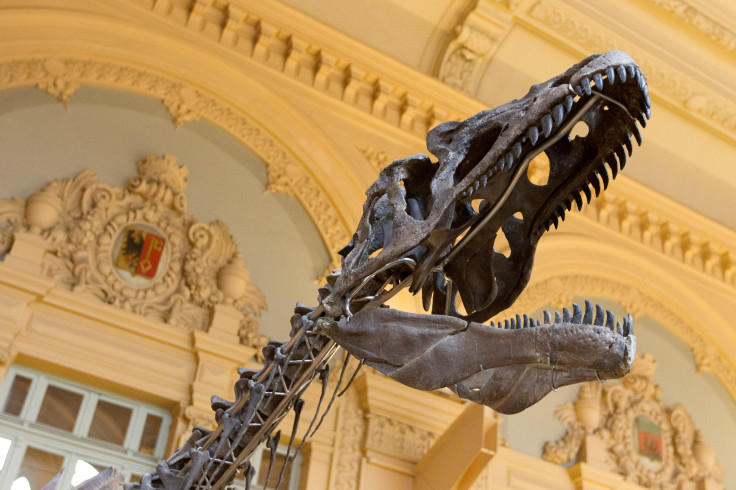Carnivorous Dinosaur Discovered In Brazil Walked On Single Toes

Researchers have unearthed the fossils of a desert-dwelling dinosaur with a unique characteristic: it balanced its weight on a single toe when it roamed what is now Brazil about 90 million years ago.
Vespersaurus walked upright on two legs, but in each of its three-toed feet, it balanced its weight on one long clawed toe that sits in between two other toes, making the reptile a monodactyl.
One-toed footprints were found in Cruzeiro do Oeste in the state of Paraná in the Southern Region of Brazil in the 1970s, but at the time, no one knew what creature produced the mysterious footprints. Now, nearly 50 years later, researchers think a Vespersaurus left the footprints.
"It's incredible that, nearly 50 years later, it seems that we have discovered what type of dinosaur would have produced those enigmatic footprints," said Paulo Manzig, from the Paleontology Museum of Cruzeiro do Oeste.
Researchers noted that the dinosaur's feet made the discovery fascinating. Paleontologist Luiz Eduardo Anelli said that the creature reveals, among others, the anatomical diversity of dinosaurs that reflected their different ways of life.
It is not yet clear how being a monodactyl helped the Vespersaurus. Other animals such as horses and ancient kangaroos lost their extra digit over the course of their evolution so they could run and jump more efficiently, so the question still has yet to be answered regarding its usefuleness.
“The kangaroo became a monodactyl to be able to jump, while the horse was able to increase its agility and speed, making it easier to escape predators and go on long journeys,” Anelli said.
Anelli said that the Vespersaurus might have also developed its toed gait for similar reasons. Other dinosaurs also appear to have benefited from being monodactyl. The single large claws of the alvarezsaurian dinosaurs that lived in China, for instance, may have allowed them to rip their way into termite and ants nets quite easily
The Late Cretaceous period dinosaur was smaller compared to other predatory dinosaurs, measuring just over five feet long and three feet tall, or roughly the size of a Great Dane.
The creature was a theropod, a group of two-footed, carnivorous dinosaurs that included the velociraptor and the tyrannosaurus. It was named as such based on the city and state where its fossils were found.
Researchers described Vespersaurus in the journal Nature Scientific Reports.
© Copyright IBTimes 2025. All rights reserved.





















